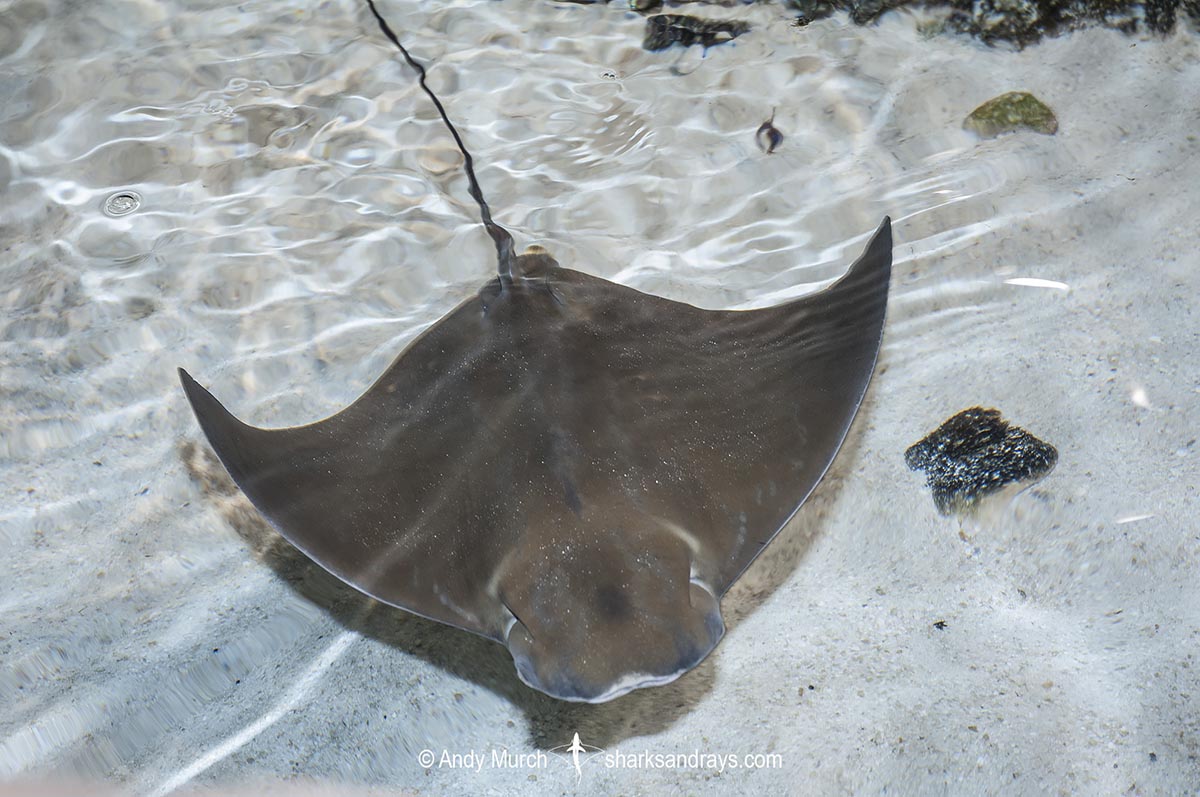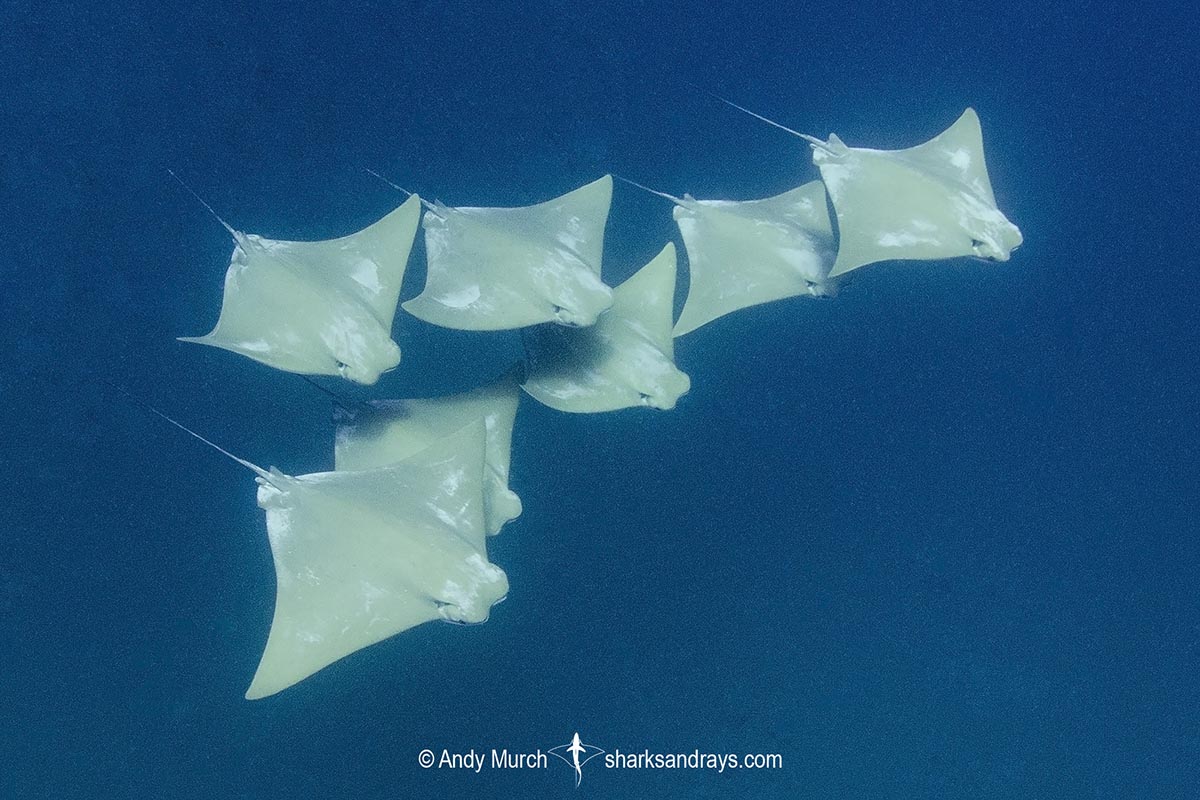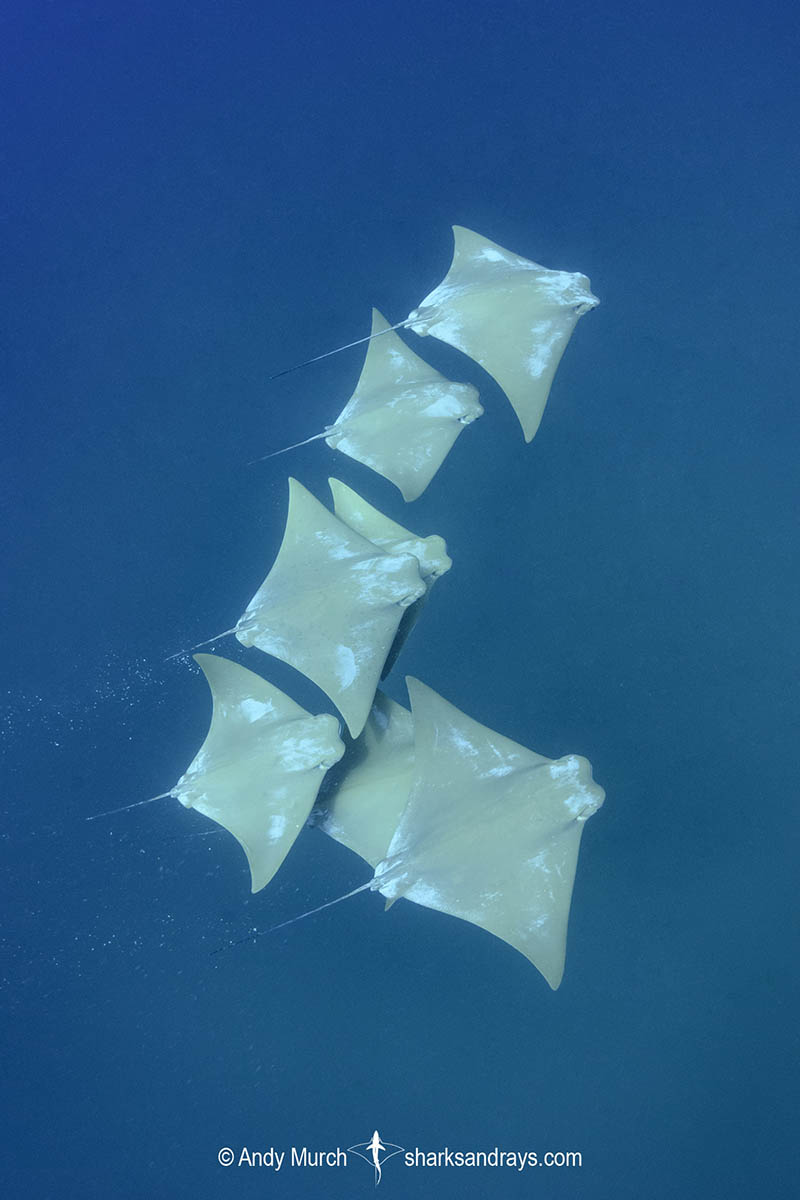Common names
Atlantic Cownose Ray, American Cownose Ray.
Binomial
Rhinoptera bonasus.
Synonyms
Raja bonasus, Raja quadriloba, Rhinoptera affinis, Rhinoptera lalandii, Rhinoptera quadriloba.
Identification
A large cownose ray with a wide, kite-shaped disc and a bulbous, protruding head. Snout notched. Cephalic lobes short; posterior edges barely reaching mouth. Lobes fit into a shallow groove when not in use. Spiracles located over pectoral fin margins.
Anterior margins of pectoral fins straight or mildly sinuous. Posterior margins of pectoral fins concave. Pectoral fin insertions deep. Pelvic fins posterior margins convex; extending slightly posterior to disc. Dorsal fin well developed, with a weakly concave posterior margin. Dorsal fin origin midway between pectoral fin insertion and pectoral free rear tip. Tail long, thin, and whiplike; 2-2.3 x disc length when intact. Thick ventral finfold present on anterior tail. Caudal sting well developed but often missing.
Colour
Dorsum mid to dark brown or or greenish grey, without markings. Cephalic lobes often darker. Ventrum mostly white with dusky pectoral fin apices. Posterior portion of tail dark ventrally.
Size
Maximum disc width 110cm. Disc width at birth 20-43cm.

Conservation Status
VULNERABLE
The American Cownose Ray has an extremely low biological productivity, with an estimated generation length of 14 years.
On the US Eastern Seaboard, Atlantic cownose rays are targeted and intentionally killed due to the misconception that they predate heavily on commercially important bivalve populations. Although, they do predate on historically abundant soft-shell clams, other commercial bivalves make up a very small percentage of their diet. This misinformation led to the development of the ‘Save the Bay, Eat a Ray’ fishery which was promoted by state fishery managers, seafood companies, some environmental organizations, even to the extent of sponsoring tournaments to cull the annoying cownose rays.
Meanwhile, the actual reason for the collapse of the bivalve population was commercial overfishing, not the existence of a naturally occurring marine species.
After a rebuttal was publicized, the campaign to eradicate the cownose rays diminished, but they are still targeted by sport fishermen.
The Atlantic Cownose Ray population in the Gulf of Mexico is slowly increasing, but further south in Central America cownose ray populations have plummeted. For example, they have completely disappeared from recent fishery landings in Venezuela.

Habitat
Bentho-pelagic in tropical and warm temperate seas. Often found in huge schools. Mainly inshore bays and seagrass beds, but also offshore.
Distribution
Western Atlantic. Occurs inshore from Massachusetts to Uruguay, including the Gulf of Mexico and northern Caribbean. Absent from the Caribbean chain south of Cuba.
Reproduction
Aplacental viviparity. One pup per litter. Gestation 11-12 months.
Diet
Diet mainly consists of benthic invertebrates. Large schools of cownose rays have been implicated in damage to seagrass beds.
Behavior
An active swimmer that is usually found in small groups or extremely large aggregations numbering in the thousands.
Off the coast of Florida, Atlantic cownose rays are found in mixed schools with Brazilian cownose rays (Dr. Gregg Poulakis pers. corr.).
Reaction to divers
Difficult to approach but sometimes seen in enormous schools come very close to boats.
Diving logistics
Divers often run into schooling cownose rays when looking for whale sharks in the southern Gulf of Mexico, and in the Atlantic close to the Yucatan Peninsula. They are probably common throughout coastal Mexico and the southern USA but more divers see them in the Gulf and Yucatan, likely just because there are seasonally more divers in the water in those areas.
Further north, there are many reports of Atlantic cownose rays in Chesapeake Bay during the summer months but the reports are mainly from fishermen. Viz in the bay is often challenging for underwater encounters.

